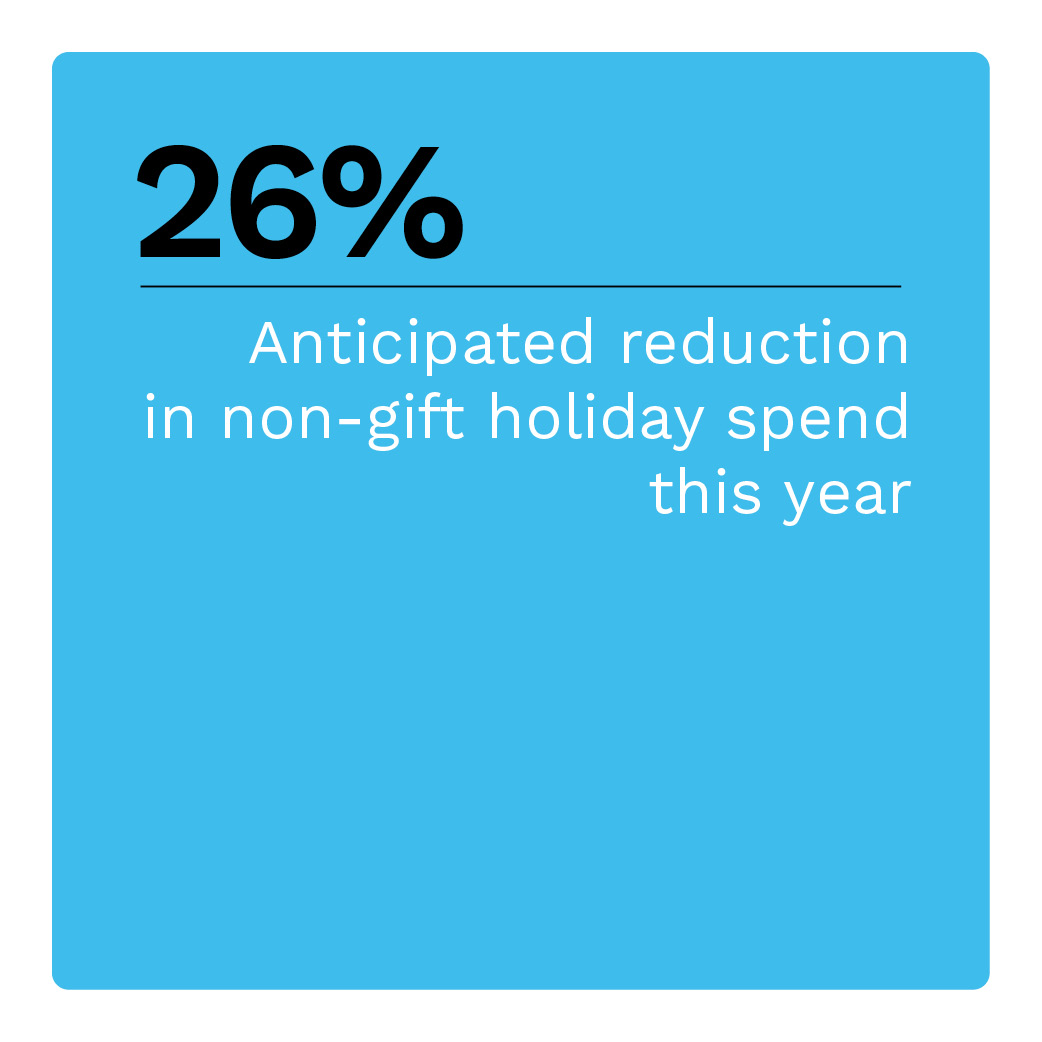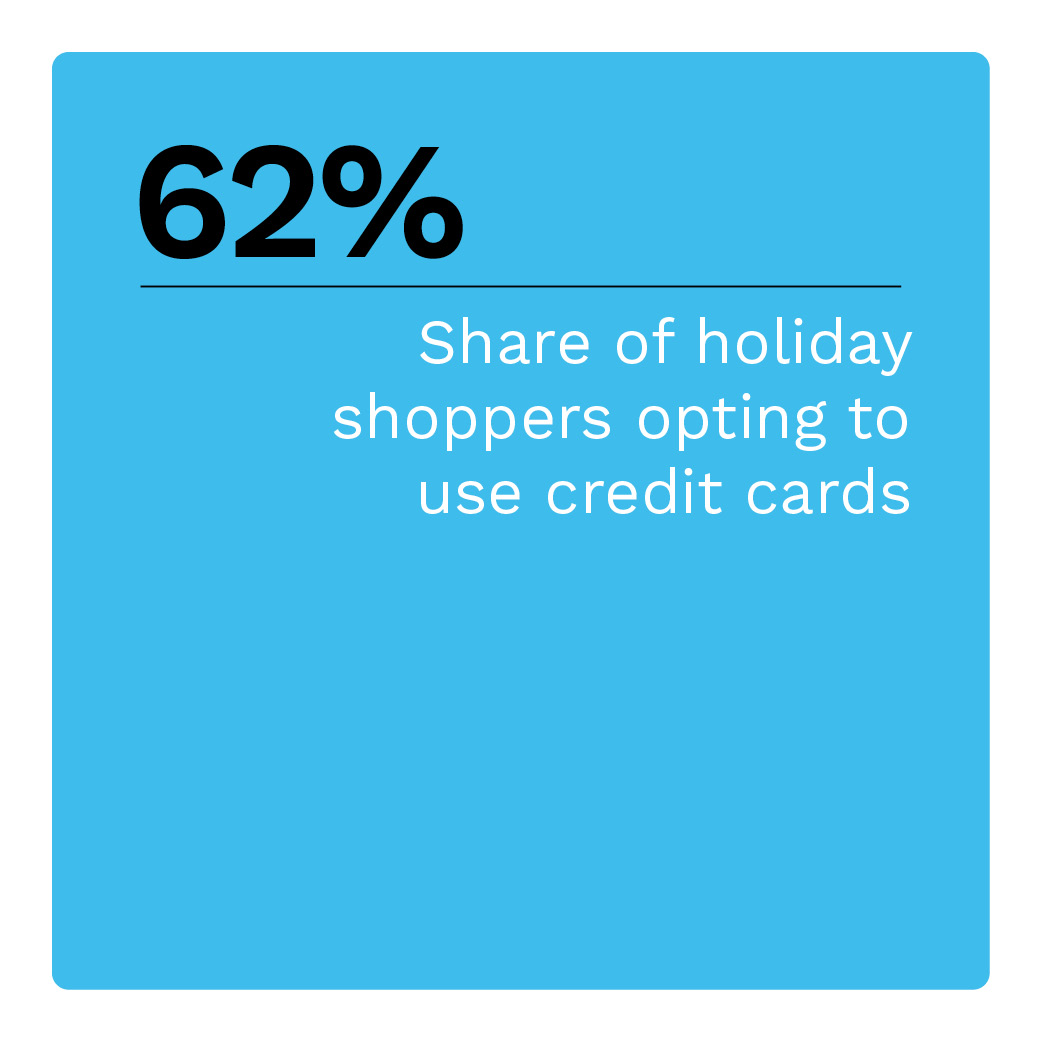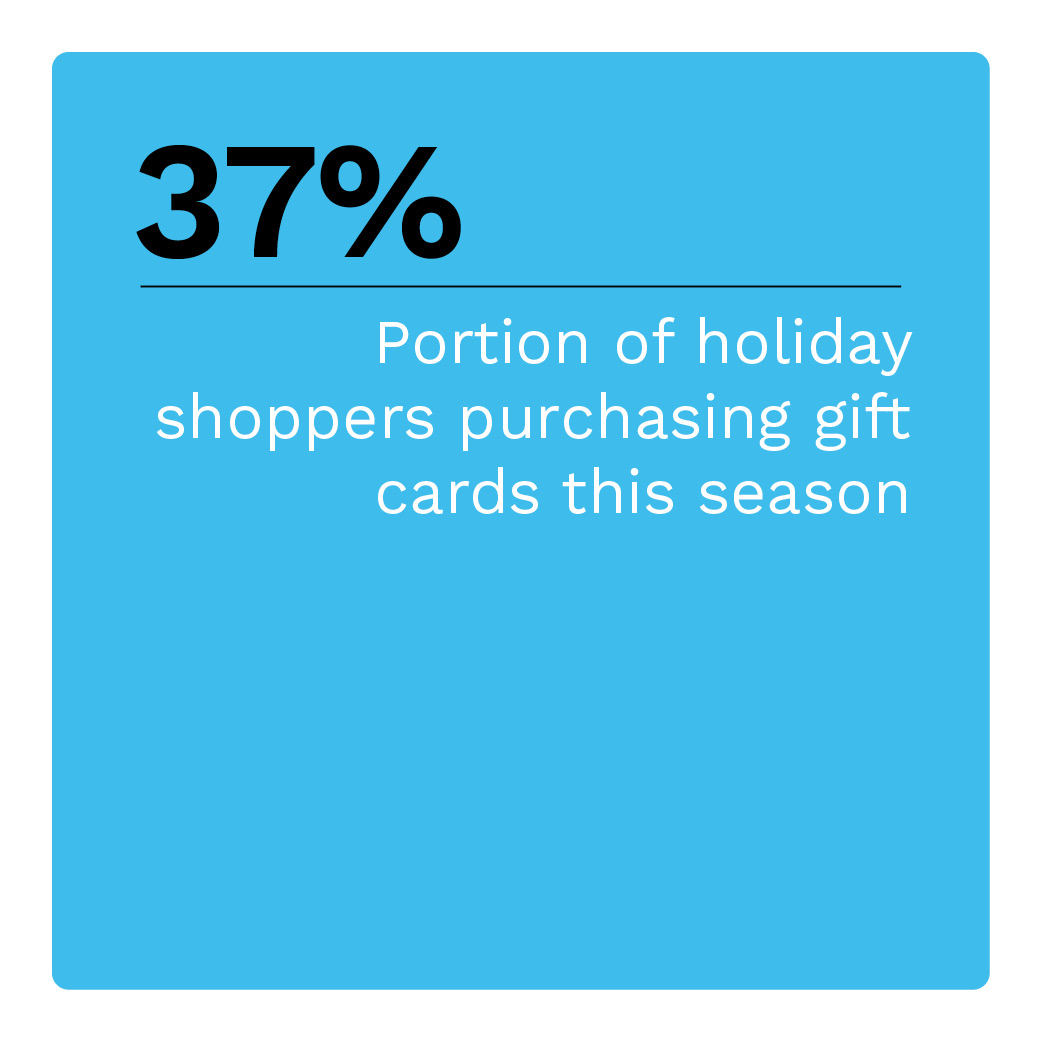Study Finds Non-Gift Holiday Spending to Drop 26% as Consumers Trim Budgets
 The average holiday shopper anticipates spending roughly $860 this year on non-gift holiday purchases such as live entertainment or retail products for personal use — compared to $1,160 in 2022. Meanwhile, spending on gifts will rise modestly and average about $1,000.
The average holiday shopper anticipates spending roughly $860 this year on non-gift holiday purchases such as live entertainment or retail products for personal use — compared to $1,160 in 2022. Meanwhile, spending on gifts will rise modestly and average about $1,000.
Personal finance considerations significantly influence consumers’ decisions on where to spend — especially during the holidays. On average, just 1 in 4 respondents plan to travel this holiday season. High travel costs contribute to consumer reluctance to spend as much this year as last.
As the holiday season approaches, data shows that credit cards remain the most popular credit product for holiday purchases. Three in 4 consumers plan to cover their holiday expenses with credit cards.
These are some of the key findings in “The Credit Economy: How Consumers Are Approaching Holiday Spending and Travel,” a PYMNTS Intelligence and i2c collaboration. This report is based on a census-balanced survey of 3,302 U.S. consumers conducted between Sept. 20 and Sept. 26. It examines consumers’ behaviors and attitudes about using credit products to pay for holiday purchases. We explore the forces driving consumers’ gift-giving and holiday travel decisions this year and their interest in and usage of credit products for these expenses.
Other key findings from the report include:
Consumers plan to cut holiday spending without skimping on gifts.
Consumers plan to spend significantly less this holiday season — 26% less. However, a 2.2% anticipated increase in gift spending indicates a deliberate effort by consumers to preserve the core aspects of holiday traditions despite prevailing financial pressures.
Shopping in-store is still a draw during the holidays following the lifting of pandemic-related restrictions.
Despite the growing popularity of Cyber Monday, traditional in-store shopping continues to dominate. Data shows that 61% of consumers will complete more than half of their holiday shopping in-store. Retail products still take overall precedence, at 58%, with clothing as the standout within the retail category, at 39%. Consumer electronics are a low priority this year, with just 14% of shoppers planning to buy electronics as gifts.
The most popular payment method this holiday shopping season will be credit cards.
Credit cards are the most popular credit product consumers plan to use for holiday purchases. This season, 62% plan to use credit cards for holiday purchases. The credit product of choice reveals noteworthy generational differences. Generation Z consumers, at 39%, and millennials, at 37%, are more likely to use BNPL than other age groups. Older groups are much more amenable to conventional credit cards. Sixty-eight percent of baby boomers and seniors and 64% of Gen X consumers plan to use them this year.
The changes in payment method preferences this holiday season are notable but are not the only adjustments consumers are making as the holiday season approaches. Download the report to explore how consumers use credit products for holiday spending.

